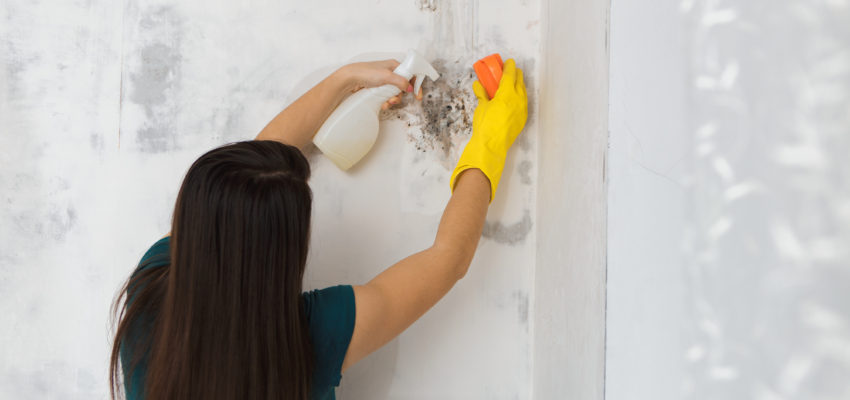When Does Homeowners Insurance Cover Mold Damage and Removal?

Mold – the four-letter word a homeowner never wants to hear. It can conjure up images of health problems and expensive removal solutions.
Whether you’re covered for mold damage and removal often comes down to the source of moisture and the wording of a policy. For most standard homeowners policies mold removal is only covered when the source of the mold is an already covered peril in your policy, such as water damage.
When Mold is Usually Covered
In most cases, if mold results from a sudden and accidental covered peril, such as a pipe bursting or the dishwasher overflowing, the cost of the mold remediation should be covered. That’s because technically the pipe burst or faulty dishwasher is the reason for the claim – not the mold itself.
Another example is a house fire. Let’s say fortunately the firefighters arrived in time to keep most of your home intact. However, due to the water from the fire hoses your home has developed mold. That could be covered by home insurance.
When Mold is Not Covered
Your insurer won’t cover a claim resulting from neglect. For example, if your showerhead has continuously leaked for months resulting in water damage and, consequently, mold. Or if your window is not properly sealed and rain leaks through continuously over time leading to mold growth. Claims are more likely to be rejected if mold is caused by neglected home maintenance: long-term exposure to humidity, or repeated water leaks and seepage.
Also, no mold damage resulting from a flood would be covered since flooding is a peril excluded from your homeowners insurance policy. However, if you purchased a separate flood insurance policy, that coverage would typically extend to any mold damage caused by a flood.
How to Control Mold
Although mold can be the result of circumstances beyond your control sometimes mold growth can be prevented.
- Check for water leaks/spills and fix them right away
- Make sure rainwater flows away from your home
- Keep your gutters clean and functional
- Watch for condensation on your walls and windows—you may need to turn down or shut off your humidifier if you notice increased moisture
- Consider running a dehumidifier in your basement or other damp areas of your home
- Perform routine maintenance on all appliances that use water (water heater, dishwasher, washing machine, refrigerator, etc.)
- Avoid carpet in wet areas like basements and bathrooms
Whether mold damage is covered by homeowners insurance often comes down to the source of the moisture that caused it. Take some time to review the language of your policy, especially as it pertains to water damage. Look for mold exclusions or limitations.
If you have questions about your policy and want to know how your policy will cover mold, talk to a local Bearingstar agent today. Our agents live in neighborhoods like yours and are uniquely qualified to determine what kind of insurance you need to cover any damage or losses you might suffer.
Back to Blog